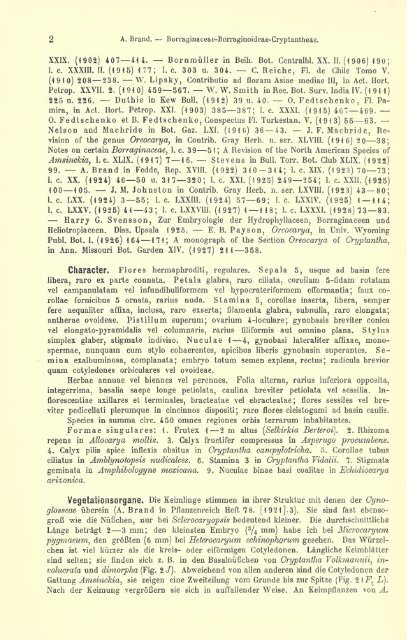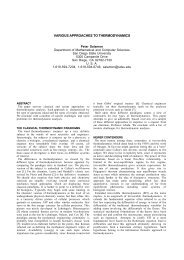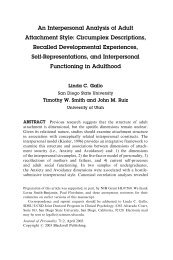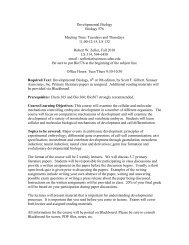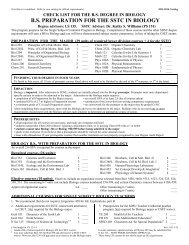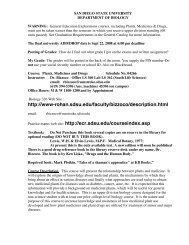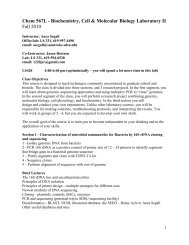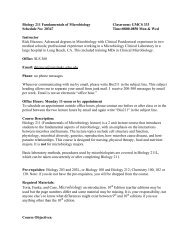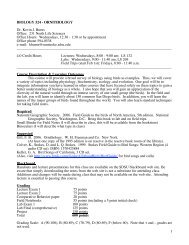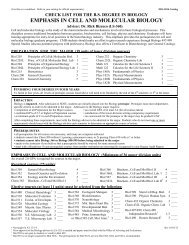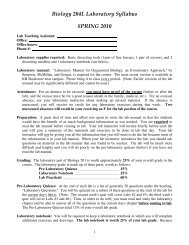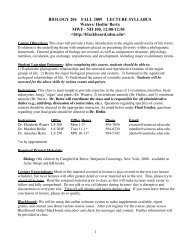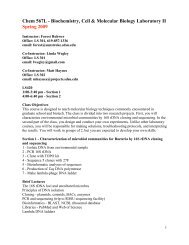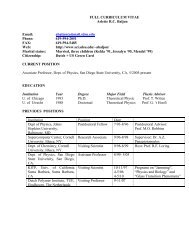Das Pflanzenreich. Regni vegetabilis conspectus. Im Auftrage der ...
Das Pflanzenreich. Regni vegetabilis conspectus. Im Auftrage der ...
Das Pflanzenreich. Regni vegetabilis conspectus. Im Auftrage der ...
You also want an ePaper? Increase the reach of your titles
YUMPU automatically turns print PDFs into web optimized ePapers that Google loves.
2 A. Brand. — Borraginaceae-Borraginoideae-Cryptantheae.<br />
XXIX. (1902) 407—444. — Bornmüller in Beih. Bot. Centralbl. XX. II. (4 906) 490 ;<br />
1. c. XXXIII. II. (4<br />
94 5)<br />
4 77; 1. c. 303 u. 304. — C.<br />
Beiche,<br />
Fl. de Chile Tomo V.<br />
(4 94 0) 208 — 238. — W. Lipsky, Gontributio ad floram Asiae mediae III,<br />
in Act. Hort.<br />
Petrop. XXVII. 2. (4 9 4 0) 459—567. — W. W. Smith in Bec. Bot. Surv. India IV. (4 9 4 4)<br />
225 u. 226. — Duthie in Kew Bull. (4 94 2) 39 u. 40. — O. Fedtschenko, Fl. Pamira,<br />
in Act. Hort. Petrop. XXI. (4903) 385—387; — 1. c. XXXI. (4945) 467 469. 0. Fedtschenko et B. Fedtschenko, Conspectus<br />
— Fl. Turkestan. V. (4 9 4 3) 55 63. —<br />
Nelson and Macbride in Bot. Gaz. — LXI. (1946) 36 43. — J. F.<br />
Macbride, Bevision<br />
of the genus Oreocarya, in Contrib. Gray Herb. n. ser. XLVIII. (4 9 4 6) 2 — 38;<br />
Notes on certain Borraginaceae, 1. c. 39 — 54; A Bevision of the North American Species of<br />
Amsinckia, I.e. XLIX. (4947) 7—46. — Stevens in Bull. Torr. Bot. Club XLIX. (4922)<br />
99. — A. Brand in Fedde, Bep. XVHI. (4 922) 34 — 34 4;<br />
1. c. XIX. (4 923) 70—73;<br />
1. c. XX. (4 924) 46—50 u. 34 7—320; 1. c. XXI. (4 925) 249—254; 1. c. XXII. (4 925)<br />
4 00—<br />
4 05. — J. M. Johnston in Contrib. Gray Herb. n. ser. LXVI1I. (4 923) 43—80;<br />
I.e. LXX. (4924) 3—55; I.e. LXXIII. (4924) 57—69; I.e. LXX1V. (4925) 1—444;<br />
I.e. LXXV. (4 925) 41— 43;<br />
1. c. LXXVIU. (4 927) 4— 4<br />
48; 1. c. LXXXI. (4 928) 73— 83.<br />
— Harry G. Svensson, Zur Embryologie <strong>der</strong> Hydrophyllaceen, Borraginaceen und<br />
Heliotropiaceen. Diss.<br />
—<br />
Upsala 925. 4 E. B.<br />
Payson, Oreocarya, in Univ. Wyoming<br />
Publ. Bot. —<br />
I.<br />
(4 926) 4 64 4<br />
71; A monograph of the Section Oreocarya of Cryptantha,<br />
in Ann. Missouri Bot. Garden XIV. (1927) 211—358.<br />
Character. Flor es hermaphroditi, reguläres. Sepala 5, usque ad basin fere<br />
libera, raro ex parte connata. Petala glabra, raro ciliata, corollam 5-fidam rotatam<br />
vel campanulatam vel infundibuliformem vel hypoerateriformem efformantia; faux corollae<br />
fornieibus 5 ornata, rarius nuda. Stamina 5,<br />
corollae inserta, libera, semper<br />
fere aequaliter affixa, inclusa, raro exserta; filamenta glabra, subnulla, raro elongata;<br />
antherae ovoideae. Pistillum superum; ovarium 4-loculare; gynobasis breviter conica<br />
vel elongato-pyramidalis vel columnaris, rarius filiformis aut omnino plana. Stylus<br />
simplex glaber, stigmate indiviso. Nuculae 1—4, gynobasi lateraliter affixae, monospermae,<br />
nun quam cum stylo cohaerentes, apieibus liberis gynobasin superantes. Semina<br />
exalbuminosa, complanata; embryo totum semen explens, rectus; radicula brevior<br />
quam cotyledones orbiculares vel ovoideae.<br />
Herbae annuae vel biennes vel perennes. Folia alterna, rarius inferiora opposita,<br />
integerrima, basalia saepe longe petiolata, caulina breviter petiolata vel sessilia. Infiorescentiae<br />
axillares et terminales, bracteatae vel ebracteatae; fiores sessiles vel breviter<br />
pedicellati plerumque in cincinnos dispositi; raro fiores cleistogami ad basin caulis.<br />
Species in summa circ. 450 omnes regiones orbis terrarum inhabitantes.<br />
2 m altus (Selkirkia Berteroi). 2. Bhizoma<br />
Formae singulares: 1. Frutex 1<br />
—<br />
repens in Allocarya mollis. 3. Calyx fruetifer compressus in Asperugo procumbens.<br />
4. Calyx pilis apice inflexis obsitus in Cryptantha campylotricha. 5. Corollae tubus<br />
ciliatus in Amblynotopsis nudicalces. 6. Stamina 3 in Cryptantha Vidalii. 7. Stigmata<br />
geminata in Amphibologyne mexicana. 9. Nuculae binae basi coalitae in Echidiocarya<br />
arizonica.<br />
Vegetationsorgane. Die Keimlinge stimmen in ihrer Struktur mit denen <strong>der</strong> Cynoglosseae<br />
überein (A. Brand in <strong>Pflanzenreich</strong> Heft 78. [1921] 3). Sie sind fast ebensogroß<br />
wie die Nüßchen, nur bei Sclerocaryopsis bedeutend kleiner. Die durchschnittliche<br />
—<br />
Länge beträgt 2 3 mm; den kleinsten z<br />
Embryo ( /i mm) habe ich bei Microcaryum<br />
pygmaeum, den größten (6 mm) bei Heterocaryum echinophorum gesehen. <strong>Das</strong> Würzelchen<br />
ist viel kürzer als die kreis- o<strong>der</strong> eiförmigen Cotyledonen. Längliche Keimblätter<br />
sind selten; sie finden sich z. B. in den Basalnüßchen von Cryptantha Volkmannii, involucrata<br />
und dimorpha (Fig. 2 /). Abweichend von allen an<strong>der</strong>en sind die Cotyledonen <strong>der</strong><br />
Gattung Amsinckia, sie zeigen eine Zweiteilung vom Grunde bis zur Spitze (Fig. %\F, L).<br />
Nach <strong>der</strong> Keimung vergrößern sie sich in auffallen<strong>der</strong> Weise. An Keimpflanzen von A.


